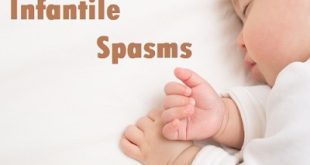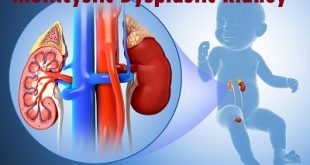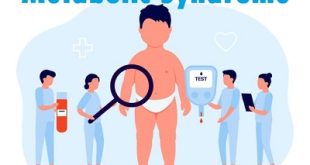Definition
Moebius syndrome is a rare neurological condition that primarily affects the muscles that control eye movement and facial expression. Palsy of the muscles in the face is a common component of Moebius syndrome, and children who have this disorder typically lack the ability to smile, frown or raise their eyebrows.
Moebius syndrome also affects muscles that control side-to-side movement of the eyes, which forces children who have this condition to move their entire head when tracking movement or reading. Sometimes the weakness or paralysis in the child’s facial muscles can also cause problems feeding as a baby and speaking as the child ages.
Because children who have Moebius syndrome often have difficulty with eye contact and speech, some doctors and scientists have suggested a link to autism spectrum disorder. However, because of the physical differences caused by this disorder, autism can be difficult to diagnose in children with Moebius syndrome. While Moebius syndrome may be associated with an increase in intellectual disability, most affected children have normal levels of intelligence for their age.
Epidemiology
The exact incidence of Mobius syndrome is unknown. Researchers estimate that the condition affects 1 in 50.000 to 1 in 500.000 new-borns. It affects boys and girls equally, and there appears to be, in some cases, an increased risk of transmitting the disorder from an affected parent to a child. Although no prenatal test for Moebius Syndrome is currently available, individuals may benefit from genetic counseling.
Types
There are four categories of Moebius syndrome:
Group 1: Cranial nerve nuclei are small or absent
Group 2: Peripheral cranial neurons have degenerated.
Group 3: Loss or degeneration of neurons, areas of microscopic damage in the brain, and hardened tissue in the brainstem nuclei.
Group 4: Muscular symptoms without lesion in the cranial nerve.
Risk factors
- Misoprostol, ergotamine, and chorionic villus sampling have been suggested as possible environmental factors.
- Certain drugs taken during pregnancy and drug abuse such as cocaine may also be risk factors of Moebius syndrome.
Causes of Moebius Syndrome
The exact cause Moebius syndrome is not known. Genetic and environmental factors have been implicated.
Genetic factors: Changes in the chromosomes 3, 10, or 13 may be responsible for Moebius syndrome. A definite family history, however, cannot be elicited in most cases.
Environmental factors: Environmental factors like certain medications or drugs of abuse taken during pregnancy may result in a baby with Moebius syndrome. These may cause changes in the blood flow to the brainstem, from where the cranial nerve arise, thereby affecting the development of the nerves. They may also cause an embryonal brain effect, resulting in the condition.
Moebius Syndrome Symptoms
It can affect people in many different ways and not everyone will have all of these symptoms. Some symptoms may also be characteristics of other neurological conditions. There is great variation in symptoms and the degree of severity. Where more cranial nerves are affected, more symptoms will arise, for example, developmental issues with the cranial nerves IX and XII may lead to impaired function of the throat and tongue.
Moebius syndrome facial weakness
Symptoms may include:
- Lack of facial expression, for example the inability to smile or frown.
- Absence of blinking resulting in dry and irritated eyes.
- Absence of lateral eye movement, because this movement is controlled by cranial nerve VI. (Eyes do not move from side to side, and the person turns their head instead).
- Strabismus (where the eyes are not properly aligned with each other).
- Inability to squint.
- Inability to suck: this can be an early indication when nursing an infant with Moebius syndrome.
- Difficulty in keeping the head back to swallow.
- Excessive drooling.
- The roof of the mouth may be high and arched with an abnormal opening (submucous cleft palate).
- Short or unusually shaped tongue.
- Small chin (micrognathia).
- Small mouth (microstomia).
- Missing and misaligned teeth.
- Hearing loss (where cranial nerve VIII is affected).
- Low muscle tone (hypotonia).
- Bone abnormalities in the arms, legs, hands and feet.
Complications of Moebius Syndrome
In addition to the physical characteristics common to Moebius, your child may have the following complications:
- Difficulty in chewing and swallowing which lead to respiratory/dental complications
- Speech impediments/limited movement of the tongue (or deformity of the tongue)
- Cleft palate or high arched palate
- Drooling
- Hearing difficulties and sensitivity to loud noises
- Eye sensitivity (due to the inability to blink or squint)
- Strabismus (crossed eyes)
- Missing limbs, fingers, toes or webbed fingers and/or toes
- Club feet or small limbs
Moebius Syndrome Diagnosis
There is no specific test to diagnose Moebius syndrome. Since the condition is present at birth, it can usually be diagnosed during a thorough new-born exam. While the specific manifestations depend on the cranial nerves that are underdeveloped or missing, there are three diagnostic criteria are as follows:
Diagnostic Criteria
- Paralysis or weakness of at least one side of the face (usually both)
- Sideways movement of the eyes is paralyzed
- Vertical movement of the eyes is intact
Medical professionals may perform more specialized testing (such as neurological or ophthalmologic exams) to rule out other conditions that can cause facial paralysis and other symptoms of Moebius syndrome.
It’s very important that the correct diagnosis is made soon after birth. Children with Moebius syndrome typically need to work with a team of medical specialists, but the earlier intervention and care teams are assembled, the better the long-term outcomes for patients.
Child with Moebius syndrome
Treatment and management
There is no single course of medical treatment or cure for Moebius syndrome. Treatment is supportive and in accordance with symptoms. Usually these children are managed by a multidisciplinary team involving pediatricians, neurologists, otolaryngologists, orthopedists, dental specialists, speech pathologists, audiologists, ophthalmologists and other healthcare professionals.
- Frequent lubrication for dry eyes is often necessary
- Physical therapy may be needed for individuals with various orthopedic abnormalities.
- Occupational therapy may also be beneficial, especially in patients with abnormalities of the hands, fingers and toes.
- Speech therapy may be necessary for some affected children.
- Strabismus is usually surgically correctable
- Specialized procedures to correct abnormalities and/or underdevelopment of the chest wall and breast are available.
- Splints, braces and prostheses may be necessary for individuals with congenital limb abnormalities.
- Corrective procedures for facial paralysis involve transfer of muscle and/or graft nerves from another area of the face or the body. The most recent procedure, called “the smile operation”, involves transfer of a muscle from the thigh to the face. This operation has shown remarkable results in terms of speech, facial mobility and self-esteem.
- Genetic counseling may benefit affected individuals and their families.
Prognosis
- Children may crawl and walk later. Most children with Moebius Syndrome eventually catch up.
- Speech problems often respond to therapy, but may persist due to impaired mobility of the tongue and/or mouth.
- As children get older, the lack of facial expression and an inability to smile may become the dominant visible symptoms.
 Diseases Treatments Dictionary This is complete solution to read all diseases treatments Which covers Prevention, Causes, Symptoms, Medical Terms, Drugs, Prescription, Natural Remedies with cures and Treatments. Most of the common diseases were listed in names, split with categories.
Diseases Treatments Dictionary This is complete solution to read all diseases treatments Which covers Prevention, Causes, Symptoms, Medical Terms, Drugs, Prescription, Natural Remedies with cures and Treatments. Most of the common diseases were listed in names, split with categories.







